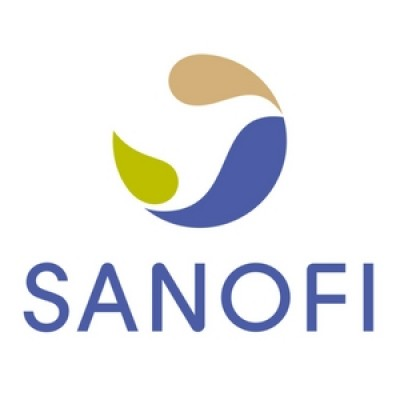The Ripple Effect of Tariffs: Europe’s Strategic Moves Amidst Uncertainty
May 28, 2025, 10:20 pm

Location: United States, Massachusetts, Cambridge
Employees: 10001+
Founded date: 1981
Total raised: $1.1B
The global economy is a delicate dance, and right now, the music is a bit off-key. U.S. futures surged recently, buoyed by President Trump’s decision to delay 50% tariffs on the European Union. This momentary relief, however, is a double-edged sword. Analysts urge caution, warning that unchecked optimism could lead to a rude awakening. The international stage is shifting, and Europe is responding with calculated moves.
In a significant diplomatic gesture, French President Emmanuel Macron visited Vietnam, marking the first visit by a French leader in nearly a decade. During this visit, the two nations inked a deal for Vietnam to purchase 20 Airbus A330neo planes. This agreement is more than just a transaction; it’s a strategic pivot. As tariffs loom large, countries are scrambling to secure their economic futures.
Meanwhile, the automotive sector is feeling the heat. Volvo Cars, the Swedish automaker, announced it would cut around 3,000 jobs. This decision is a stark reminder of the pressures companies face in a tariff-laden environment. Volvo, owned by China’s Geely Holding, has already pulled a China-made vehicle from the U.S. market due to these tariffs. The company’s withdrawal of financial guidance for 2025 and 2026 underscores the uncertainty that tariffs bring to the table.
While Brussels may breathe a sigh of relief with the tariff delay, the underlying tension remains. Trump’s tariff policies are like a storm cloud, casting shadows over global trade. The optimism in the markets may be short-lived. Analysts caution that even if a deal reduces import duties to 20% or 30%, the EU will likely retaliate with significant countermeasures. The economic chess game continues, and the stakes are high.
In the backdrop of these developments, China’s industrial profits are showing signs of resilience. A 3% increase in April, up from 2.6% in March, reflects Beijing’s efforts to bolster the private sector. This growth is a glimmer of hope amidst the tariff turmoil. It suggests that while the U.S. may wield tariffs like a sword, China is adapting, finding ways to thrive despite the challenges.
The ripple effects of these tariffs extend beyond immediate economic impacts. They influence investor sentiment and market dynamics. U.S. futures jumped in response to the tariff delay, and European markets followed suit. The Stoxx 600 index rose by nearly 1%, with all sectors in positive territory. European auto stocks rebounded, recovering from previous losses. Yet, this rebound feels fragile, like a house of cards.
The volatility in the markets is palpable. Investors are caught in a tug-of-war between hope and caution. The thrill of a temporary reprieve is tempered by the reality of ongoing trade tensions. The global economy is interconnected, and decisions made in one corner of the world send shockwaves across borders.
As the dust settles from the recent tariff developments, the ultra-rich are making moves of their own. In Singapore, a surge in demand for gold storage reflects growing concerns about global risks. The Reserve, a fortified facility, has seen an 88% increase in orders for gold and silver storage compared to the previous year. This trend signals a shift in how wealth is safeguarded in uncertain times. Investors are seeking refuge in tangible assets, opting for gold as a hedge against volatility.
The narrative of tariffs and trade is not just about numbers; it’s about strategy and survival. Countries are recalibrating their approaches, seeking new partnerships and securing their economic interests. Macron’s deal with Vietnam is a case in point. It’s a proactive step, a way to strengthen ties and diversify trade routes in the face of uncertainty.
Volvo’s layoffs, on the other hand, highlight the human cost of these economic maneuvers. Jobs lost are not just statistics; they represent lives affected by the shifting tides of trade policy. The automotive industry is at a crossroads, grappling with the dual pressures of tariffs and changing consumer preferences. As companies navigate this landscape, the focus must remain on innovation and adaptability.
In the midst of this economic maelstrom, Warren Buffett’s insights from Berkshire Hathaway’s annual meeting offer a beacon of wisdom. His reflections on investment strategies and market trends provide valuable lessons for navigating uncertainty. Investors would do well to heed his advice, balancing optimism with a healthy dose of skepticism.
As we look ahead, the path remains rocky. The global economy is like a ship at sea, buffeted by winds of change. Tariffs may be delayed, but the underlying currents of trade tensions persist. Europe’s strategic responses are a testament to resilience and adaptability. The dance of diplomacy and economics continues, and all eyes are on the horizon.
In conclusion, the interplay of tariffs, trade, and strategic maneuvers paints a complex picture. The global economy is in flux, and the stakes are high. As nations recalibrate their strategies, the focus must remain on collaboration and innovation. The road ahead may be uncertain, but with careful navigation, there is potential for growth and prosperity. The world is watching, and the next moves will be crucial.
In a significant diplomatic gesture, French President Emmanuel Macron visited Vietnam, marking the first visit by a French leader in nearly a decade. During this visit, the two nations inked a deal for Vietnam to purchase 20 Airbus A330neo planes. This agreement is more than just a transaction; it’s a strategic pivot. As tariffs loom large, countries are scrambling to secure their economic futures.
Meanwhile, the automotive sector is feeling the heat. Volvo Cars, the Swedish automaker, announced it would cut around 3,000 jobs. This decision is a stark reminder of the pressures companies face in a tariff-laden environment. Volvo, owned by China’s Geely Holding, has already pulled a China-made vehicle from the U.S. market due to these tariffs. The company’s withdrawal of financial guidance for 2025 and 2026 underscores the uncertainty that tariffs bring to the table.
While Brussels may breathe a sigh of relief with the tariff delay, the underlying tension remains. Trump’s tariff policies are like a storm cloud, casting shadows over global trade. The optimism in the markets may be short-lived. Analysts caution that even if a deal reduces import duties to 20% or 30%, the EU will likely retaliate with significant countermeasures. The economic chess game continues, and the stakes are high.
In the backdrop of these developments, China’s industrial profits are showing signs of resilience. A 3% increase in April, up from 2.6% in March, reflects Beijing’s efforts to bolster the private sector. This growth is a glimmer of hope amidst the tariff turmoil. It suggests that while the U.S. may wield tariffs like a sword, China is adapting, finding ways to thrive despite the challenges.
The ripple effects of these tariffs extend beyond immediate economic impacts. They influence investor sentiment and market dynamics. U.S. futures jumped in response to the tariff delay, and European markets followed suit. The Stoxx 600 index rose by nearly 1%, with all sectors in positive territory. European auto stocks rebounded, recovering from previous losses. Yet, this rebound feels fragile, like a house of cards.
The volatility in the markets is palpable. Investors are caught in a tug-of-war between hope and caution. The thrill of a temporary reprieve is tempered by the reality of ongoing trade tensions. The global economy is interconnected, and decisions made in one corner of the world send shockwaves across borders.
As the dust settles from the recent tariff developments, the ultra-rich are making moves of their own. In Singapore, a surge in demand for gold storage reflects growing concerns about global risks. The Reserve, a fortified facility, has seen an 88% increase in orders for gold and silver storage compared to the previous year. This trend signals a shift in how wealth is safeguarded in uncertain times. Investors are seeking refuge in tangible assets, opting for gold as a hedge against volatility.
The narrative of tariffs and trade is not just about numbers; it’s about strategy and survival. Countries are recalibrating their approaches, seeking new partnerships and securing their economic interests. Macron’s deal with Vietnam is a case in point. It’s a proactive step, a way to strengthen ties and diversify trade routes in the face of uncertainty.
Volvo’s layoffs, on the other hand, highlight the human cost of these economic maneuvers. Jobs lost are not just statistics; they represent lives affected by the shifting tides of trade policy. The automotive industry is at a crossroads, grappling with the dual pressures of tariffs and changing consumer preferences. As companies navigate this landscape, the focus must remain on innovation and adaptability.
In the midst of this economic maelstrom, Warren Buffett’s insights from Berkshire Hathaway’s annual meeting offer a beacon of wisdom. His reflections on investment strategies and market trends provide valuable lessons for navigating uncertainty. Investors would do well to heed his advice, balancing optimism with a healthy dose of skepticism.
As we look ahead, the path remains rocky. The global economy is like a ship at sea, buffeted by winds of change. Tariffs may be delayed, but the underlying currents of trade tensions persist. Europe’s strategic responses are a testament to resilience and adaptability. The dance of diplomacy and economics continues, and all eyes are on the horizon.
In conclusion, the interplay of tariffs, trade, and strategic maneuvers paints a complex picture. The global economy is in flux, and the stakes are high. As nations recalibrate their strategies, the focus must remain on collaboration and innovation. The road ahead may be uncertain, but with careful navigation, there is potential for growth and prosperity. The world is watching, and the next moves will be crucial.


